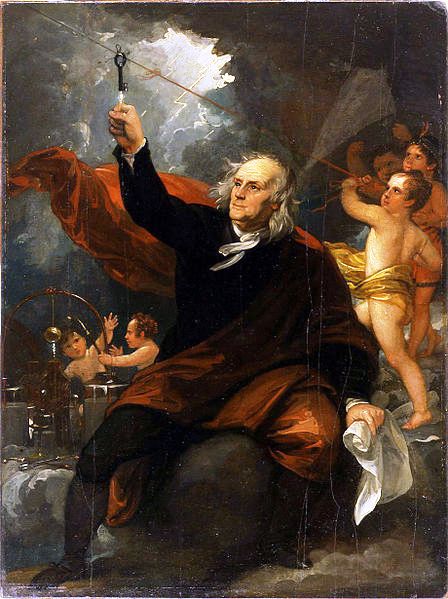- Series:History, Transcript English
Luke 12:54-55
“And he said also to the people, When ye see a cloud rise out of the west, straightway ye say, There cometh a shower; and so it is. And when [ye see] the south wind blow, ye say, There will be heat; and it cometh to pass.”
When we think of science and kites, we usually think of Ben Franklin flying his kite in the thunderstorm. Ben Franklin was not the first to use kites to study the weather. Nor was he the last. The U.S. Weather Bureau began using kites to study the weather after the invention of the box kite in 1893. Kites became important weather station tools for the next 30 years. As balloons were improved, the Weather Bureau’s use of kites stopped.
 In 1990, meteorologists again returned to the kite. Modern, high-tech materials gave meteorologists the hope of doing research with kites that was impossible with balloons. Modern meteorological kites can be “parked” miles high for weeks. A kite the size of two compact cars can weigh only a pound. Vents in the front of the wing-shaped kite inflate it so that it holds its wing shape. Instruments on the kite send down weather readings from various altitudes along the tether. The world record altitude reached by one of these kites is almost 12 miles!
In 1990, meteorologists again returned to the kite. Modern, high-tech materials gave meteorologists the hope of doing research with kites that was impossible with balloons. Modern meteorological kites can be “parked” miles high for weeks. A kite the size of two compact cars can weigh only a pound. Vents in the front of the wing-shaped kite inflate it so that it holds its wing shape. Instruments on the kite send down weather readings from various altitudes along the tether. The world record altitude reached by one of these kites is almost 12 miles!
The creation that God made for us has always inspired man’s curiosity and wonder. Unfortunately, many of today’s scientists would just as soon ignore God. However, the foundation upon which they build is the scientific accomplishments of earlier scientists who, for the most part, believed in and worshiped our Creator.
Prayer:
I thank You, dear Father, for the blessings we enjoy because of science. I ask that You would use the increased involvement of Your people in science so that science once again is used to glorify You instead of debate with You. In Jesus’ Name. Amen.
Notes:
Richard Monastersky. 1992. “Astride the Wind.” Science News, Vol. 141, April 4, pp. 216-219. Painting: Benjamin Franklin Drawing Electricity from the Sky (ca. 1816) by artist Benjamin West.
